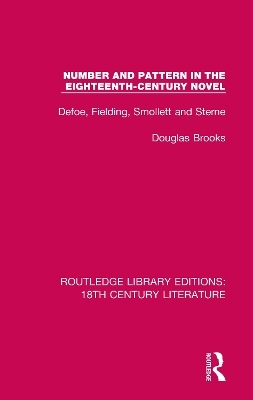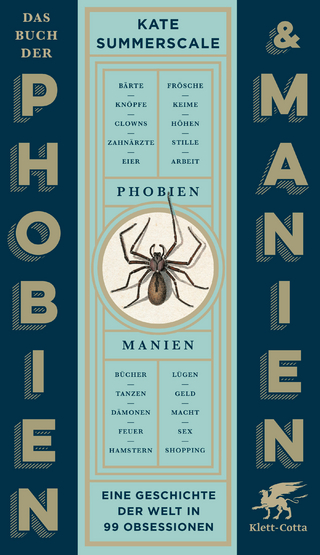
Number and Pattern in the Eighteenth-Century Novel
Defoe, Fielding, Smollett and Sterne
Seiten
2022
Routledge (Verlag)
978-0-367-44404-4 (ISBN)
Routledge (Verlag)
978-0-367-44404-4 (ISBN)
Numerological patterning in literature, where structural details of a literary work are symbolically related to its meaning on the verbal level, was common from the Middle Ages to the 17th century. First published in 1973, the author breaks new ground in revealing that familiarity with this technique lived on into the 18th century.
Numerological patterning in literature, where structural details of a literary work are symbolically related to its meaning on the verbal level, was particularly common from the Middle Ages up to the seventeenth century. Originally published in 1973, the author breaks new ground in revealing that familiarity with this technique lived on into the eighteenth century, supplying the more artistically aware of the early British novelists with meaningful formal guidelines.
An account is given of the origins and continuity of the numerological tradition in Western European – and particularly English – thought as it affected literary structure. The careful structural patterning in the novels of Defoe and in Fielding’s Joseph Andrews and Tom Jones is examined in detail. Smollett, too, is shown to have been interested in exploring the possibilities of number and pattern, and the clear-cut numerological framework of Sterne’s Tristram Shandy is revealed.
This original and controversial study combines structural analysis with fresh interpretative insights, and draws parallels with painting, music and architecture. It also has an important bearing on the history of ideas in the first half of the eighteenth century.
Numerological patterning in literature, where structural details of a literary work are symbolically related to its meaning on the verbal level, was particularly common from the Middle Ages up to the seventeenth century. Originally published in 1973, the author breaks new ground in revealing that familiarity with this technique lived on into the eighteenth century, supplying the more artistically aware of the early British novelists with meaningful formal guidelines.
An account is given of the origins and continuity of the numerological tradition in Western European – and particularly English – thought as it affected literary structure. The careful structural patterning in the novels of Defoe and in Fielding’s Joseph Andrews and Tom Jones is examined in detail. Smollett, too, is shown to have been interested in exploring the possibilities of number and pattern, and the clear-cut numerological framework of Sterne’s Tristram Shandy is revealed.
This original and controversial study combines structural analysis with fresh interpretative insights, and draws parallels with painting, music and architecture. It also has an important bearing on the history of ideas in the first half of the eighteenth century.
Douglas Brooks
Preface. 1. Introduction: The Numerological Background 2. Defoe: Robinson Crusoe, Captain Singleton, Colonel Jack 3. Defoe: Moll Flanders and Roxana 4. Fielding: Joseph Andrews 5. Fielding: Tom Jones and Amelia 6. Smollett: Roderick Random, Peregrine Pickle, Ferdinand Count Fathom 7. Smollett: Humphrey Clinker 8. Sterne: Tristram Shandy. Appendix: Prefatory Table from The Holy Bible…, By the Late Rev. Mr Ostervald (1793). Select Bibliography. Index.
| Erscheinungsdatum | 19.01.2022 |
|---|---|
| Reihe/Serie | Routledge Library Editions: 18th Century Literature |
| Verlagsort | London |
| Sprache | englisch |
| Maße | 138 x 216 mm |
| Gewicht | 453 g |
| Themenwelt | Geschichte ► Teilgebiete der Geschichte ► Kulturgeschichte |
| Geisteswissenschaften ► Sprach- / Literaturwissenschaft ► Anglistik / Amerikanistik | |
| Geisteswissenschaften ► Sprach- / Literaturwissenschaft ► Literaturgeschichte | |
| Geisteswissenschaften ► Sprach- / Literaturwissenschaft ► Literaturwissenschaft | |
| ISBN-10 | 0-367-44404-6 / 0367444046 |
| ISBN-13 | 978-0-367-44404-4 / 9780367444044 |
| Zustand | Neuware |
| Haben Sie eine Frage zum Produkt? |
Mehr entdecken
aus dem Bereich
aus dem Bereich
der stille Abschied vom bäuerlichen Leben in Deutschland
Buch | Hardcover (2023)
C.H.Beck (Verlag)
23,00 €
vom Mittelalter bis zur Gegenwart
Buch | Softcover (2024)
C.H.Beck (Verlag)
12,00 €
eine Geschichte der Welt in 99 Obsessionen
Buch | Hardcover (2023)
Klett-Cotta (Verlag)
22,00 €


